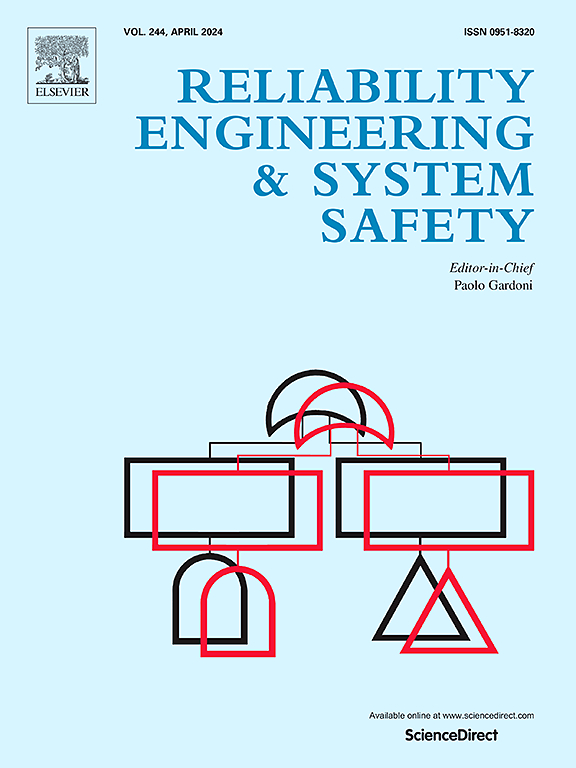Application of physics-informed machine learning in performance degradation and RUL prediction of hydraulic piston pumps
IF 9.4
1区 工程技术
Q1 ENGINEERING, INDUSTRIAL
引用次数: 0
Abstract
Hydraulic pumps have been widely used in various application domains, especially in aerospace and industrial machinery. Therefore, the accurate prediction of the performance degradation and remaining useful life (RUL) is crucial for ensuring the high reliability and safety of hydraulic pump pressure supply systems. However, the hydraulic pump performance degradation is a complex multi-factor coupling process, which is affected by the wear of internal key friction pairs and external operating conditions. This paper proposes a method that integrates failure mechanisms with data-driven approaches to forecast the degradation trajectory of hydraulic pumps, considering both the wear and operating conditions. Based on the friction and wear failure mechanism, wear evaluation models for three key friction pairs are first developed, and the wear of the hydraulic pump is evaluated by the output of the model. A Long Short-Term Memory (LSTM) network is then used to construct the mapping relationship between the wear level and return oil flow of the hydraulic pump. Afterwards, the dynamic model is iterated by updating the degradation sensitive parameters of three pairs of key friction pairs. Finally, the effectiveness of the proposed physics-informed LSTM (PI-LSTM) network framework is verified on four collected hydraulic pump degradation datasets, and compared with those of state-of-the-art methods.
求助全文
约1分钟内获得全文
求助全文
来源期刊

Reliability Engineering & System Safety
管理科学-工程:工业
CiteScore
15.20
自引率
39.50%
发文量
621
审稿时长
67 days
期刊介绍:
Elsevier publishes Reliability Engineering & System Safety in association with the European Safety and Reliability Association and the Safety Engineering and Risk Analysis Division. The international journal is devoted to developing and applying methods to enhance the safety and reliability of complex technological systems, like nuclear power plants, chemical plants, hazardous waste facilities, space systems, offshore and maritime systems, transportation systems, constructed infrastructure, and manufacturing plants. The journal normally publishes only articles that involve the analysis of substantive problems related to the reliability of complex systems or present techniques and/or theoretical results that have a discernable relationship to the solution of such problems. An important aim is to balance academic material and practical applications.
 求助内容:
求助内容: 应助结果提醒方式:
应助结果提醒方式:


